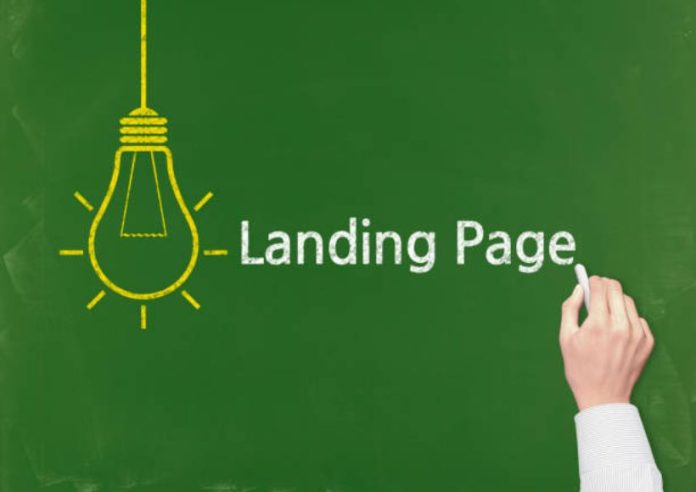The primary goal of a landing page is to convert visitors into leads or customers, facilitating sales team engagement and deal closure. To achieve this:
- Focus on a singular, compelling call-to-action, concise and persuasive content, attention-grabbing headlines, and clear visuals.
- Remove distractions and provide social proof.
- Ensure mobile optimization, fast loading times, and A/B testing for continual improvement.
By adhering to these principles, you can design a landing page that effectively generates leads, supporting your sales efforts and business growth.
Here’s how to design an effective landing page and what it is for:
Identify A Clear Offer
Identifying a transparent and honest offer is paramount when designing a landing page. Put yourself in their shoes to captivate potential clients and entice them to share their information. Provide something genuinely valuable, unique, or enticing that aligns with their needs and interests. Honesty is critical; deceptive offers can harm your brand. The offer you present on your landing page is critical to its success. It should be compelling, relevant, and communicated to build trust and encourage visitors to take action, ultimately converting them into leads and potential clients who genuinely value your offer.
Definition Of The Type Of Client We Want
The title of a landing page serves as a magnet for the type of client you want to attract. It defines the offer and shapes the content around it. Carefully selecting a title is crucial because it determines the audience you’ll draw. For instance, if you aim to promote a manufacturer’s product sporadically, the title could directly feature the manufacturer’s name and the product. Such landing pages often reside on their domain because the corporate website’s structure, like an online store, may not be conducive to creating a specific sales funnel. This strategic title choice ensures you’re reaching the right audience effectively.
Detailed Description
A detailed description on a landing page is a crucial component of inbound marketing. It provides transparency and clarity about what visitors can expect in exchange for information. While some may opt for ambiguity to pique curiosity, we advise against it. Clear, informative descriptions set accurate expectations and build trust with potential customers. Inbound marketing aims to convert prospects into customers by establishing credibility and offering value. By articulating the benefits, features, or content they’ll receive, you create a strong incentive for visitors to fill out the form, ultimately fostering a more productive and authentic customer relationship.
Well-Defined Visual Content Before Its Elaboration
Creating visually appealing and unique landing pages is essential for capturing the attention of your audience and driving action. High-quality visual and written content sets your offering apart from competitors and encourages visitors to engage. Concise yet comprehensive information is critical; users should quickly grasp the value of your product or service within minutes. A well-designed landing page conveys that they’re encountering something distinctive, whether a product or service and inspires them to fill out the form to learn more. In today’s digital landscape, compelling visuals and concise, informative content are powerful tools for converting visitors into leads and customers.
Call To Action (CTA)
A Call to Action (CTA) is pivotal in marketing and web design. It is a precise, concise, and compelling prompt encouraging the audience to take a specific action. CTAs are strategically placed within content, typically as buttons or hyperlinks. They are designed to guide visitors towards a desired outcome, such as purchasing, subscribing to a newsletter, downloading an ebook, or signing up for a service.
Effective CTAs share several characteristics
Clarity: A CTA should use straightforward language, leaving no ambiguity about what action the user is expected to take.
Visibility: CTAs should stand out visually, often using contrasting colours and styling to draw attention.
Action-Oriented Language: Use action verbs that convey a sense of urgency or benefit, such as “Buy Now,” “Get Started,” or “Subscribe Today.”
Relevance: The CTA should align with the content’s purpose and offer, ensuring it’s contextually appropriate.
Placement: CTAs should be strategically located, typically near the top, middle, and end of a page or within content sections.
Mobile Optimization: Given the prevalence of mobile users, CTAs should be mobile-friendly and easy to tap.
CTAs play a critical role in driving conversions and achieving marketing objectives. When thoughtfully crafted and strategically placed, they guide users through the desired journey, enhancing the user experience and ultimately achieving your business goals.
A/B testing
A/B testing is a method for refining landing pages and boosting conversion rates. It involves creating two versions (A and B) of a page, with one element being different—such as headlines, visuals, or CTA buttons. You can determine which performs better by exposing equal segments of visitors to both versions. This data-driven approach helps identify what resonates most with your audience, enabling ongoing optimization for improved user engagement and conversion rates. A/B testing is an essential tool for making informed decisions and continuously enhancing the effectiveness of your landing pages.
Additional Tips for Designing an Effective Landing Page
- Keep the page clean and uncluttered, focusing on the core message and CTA.
- Use persuasive headlines and subheadings to capture attention and communicate the value proposition.
- Include social proof elements like testimonials, reviews, or trust badges to build credibility.
- Use a responsive design to ensure the landing page looks and functions well on various devices.
- Minimize distractions by removing navigation menus and links that could lead visitors away from the page.
- A/B test different elements, such as headlines, visuals, and CTAs, to optimize the page’s performance over time.
Conclusion
The primary goal of a landing page is to convert visitors into leads or customers. To measure its effectiveness, track critical metrics like conversion, click-through, and bounce rates and make adjustments to improve its performance.
Also Read : How To Improve The Speed Of Your Website?



